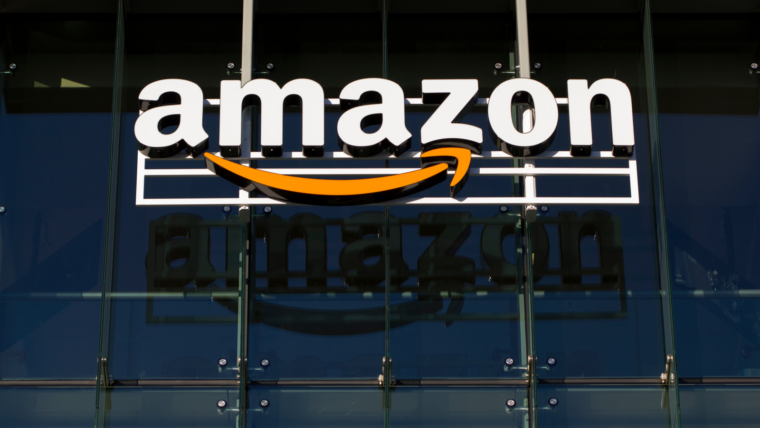Amazon’s journey from an online bookstore to a global e-commerce and cloud computing giant is a testament to its innovative strategies and relentless expansion. In recent years, Amazon has shown remarkable revenue growth, although its journey has been punctuated by fluctuations in profit margins due to heavy investments in expansion and technology. For investors, understanding Amazon’s current status is crucial. This analysis aims to dissect Amazon’s financial health, market positioning, and future prospects to determine whether it’s a buy or sell as we move into 2024 and beyond.
Key Financial Metrics

Amazon’s revenue growth trends have been impressive, consistently outpacing many of its competitors. However, a closer look at its profit margins and earnings per share (EPS) reveals a more nuanced picture. While revenue growth is robust, Amazon’s profit margins have been under pressure, primarily due to its significant investments in new markets, technology, and infrastructure. Compared to industry benchmarks, Amazon’s EPS growth rate showcases the company’s potential for profitability amidst aggressive expansion strategies. This juxtaposition of high revenue growth against squeezed profit margins is central to understanding Amazon’s financial health.
Market Positioning
Amazon’s dominance across various sectors, including e-commerce, cloud computing, and digital streaming, underscores its formidable market share. The company’s competitive advantages are numerous, including its vast selection, prime membership ecosystem, and advanced logistics network. However, Amazon faces challenges, such as regulatory scrutiny and antitrust concerns, which could impact its operational freedom and Amazon stock. Despite these hurdles, Amazon’s market positioning remains strong, supported by its ability to innovate and scale across industries.
Expansion and Diversification

Amazon’s relentless expansion into new markets and industries is a cornerstone of its growth strategy. From acquiring Whole Foods to venturing into healthcare and media, Amazon’s diversification efforts are aimed at cementing its market leadership. While these moves open up new revenue streams, they also introduce potential risks, including integration challenges and increased competition. Nevertheless, Amazon’s track record of successful acquisitions and strategic partnerships suggests that its diversification efforts may well be a boon for long-term growth.
Technological Innovation
Investment in technology and R&D is in Amazon’s DNA, driving its competitive edge in e-commerce, cloud computing, and artificial intelligence. Amazon’s commitment to innovation not only enhances its core business operations but also positions it as a leader in emerging technologies. The potential impact of these investments on Amazon’s future growth and profitability cannot be overstated, as they enable the company to stay ahead in a rapidly evolving digital landscape.
E-commerce Trends

The e-commerce landscape is continuously evolving, with shifts in consumer preferences and technological advancements. Amazon’s ability to adapt and innovate has been key to its success in capturing and sustaining market leadership in online retail. The company’s focus on customer experience, fast delivery, and expanding product assortments aligns with current e-commerce trends. Looking ahead, Amazon’s agility in responding to changing consumer behaviors and market dynamics will be critical for its growth in online retail and related markets.
Cloud Computing and AWS
Amazon Web Services (AWS) has emerged as a major profit center for Amazon, underscoring the significance of cloud computing to its overall business strategy. AWS’s revenue growth and profitability have been stellar, reflecting the increasing demand for cloud services. However, the cloud computing market is becoming increasingly competitive, with significant players like Microsoft Azure and Google Cloud posing challenges. Amazon’s ability to maintain its leadership in this space will depend on its continued innovation and ability to offer value to a diverse customer base.
International Expansion

Amazon’s international expansion strategy is pivotal for its growth, offering access to new markets and customer segments. However, expanding globally comes with its set of challenges, including regulatory hurdles, cultural differences, and logistical complexities. Amazon’s approach to overcoming these barriers—through localized offerings and strategic partnerships—highlights its commitment to being a global e-commerce leader. The success of its international expansion efforts will significantly influence Amazon’s growth prospects in the coming years.
Supply Chain and Logistics
Amazon’s investments in supply chain optimization and logistics infrastructure have been critical to its ability to offer fast and reliable delivery. These efforts have not only enhanced customer satisfaction but also provided Amazon with a competitive advantage. However, supply chain disruptions and operational challenges pose ongoing risks. Amazon’s response to these challenges, including its push towards automation and sustainability in logistics, will be key to maintaining its operational efficiency and customer service standards.
Sustainability Initiatives

Amazon’s commitment to environmental sustainability, including its pledge to achieve carbon neutrality and invest in renewable energy, reflects a growing corporate emphasis on social responsibility. These initiatives not only contribute to environmental conservation but also enhance Amazon’s brand image and appeal to socially conscious consumers and investors. The long-term benefits of these sustainability efforts, including potential cost savings and regulatory advantages, could significantly impact Amazon’s growth trajectory.
Risks and Concerns
Investing in Amazon is not without its risks. Regulatory pressures, legal challenges, and geopolitical tensions represent significant uncertainties. Additionally, the competitive landscape is intensifying, with traditional and digital competitors alike vying for market share. Amazon’s ability to navigate these risks while continuing to innovate and expand will be crucial for its sustained growth and profitability.
Investment Strategies

When considering Amazon as an investment, it’s essential to weigh its growth prospects against the inherent risks and challenges. For investors with a high risk tolerance and a long-term perspective, Amazon presents a compelling opportunity, given its market leadership, innovation capabilities, and expansion potential. However, cautious investors might seek more stability and clearer short-term profitability. Ultimately, Amazon’s outlook for 2024 and beyond hinges on its ability to maintain its competitive edge, manage risks, and capitalize on emerging opportunities.
Conclusion
Amazon’s journey is emblematic of the dynamic nature of the digital economy, marked by rapid growth, diversification, and continuous innovation. While challenges abound, Amazon’s foundational strengths—its market positioning, technological prowess, and strategic expansion efforts—suggest a positive outlook for the future. Investors considering Amazon must balance these factors against the potential risks and their investment objectives. As we look towards 2024 and beyond, Amazon remains a fascinating case study in resilience, innovation, and the relentless pursuit of growth.
